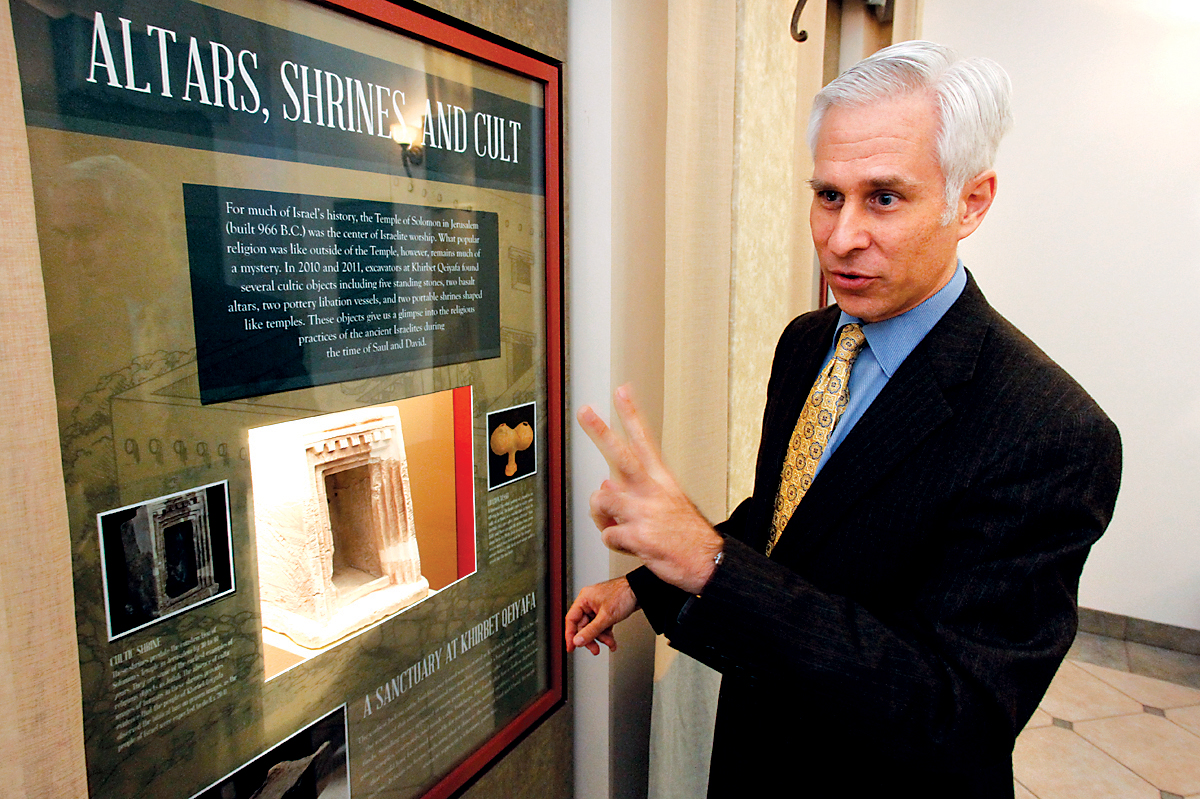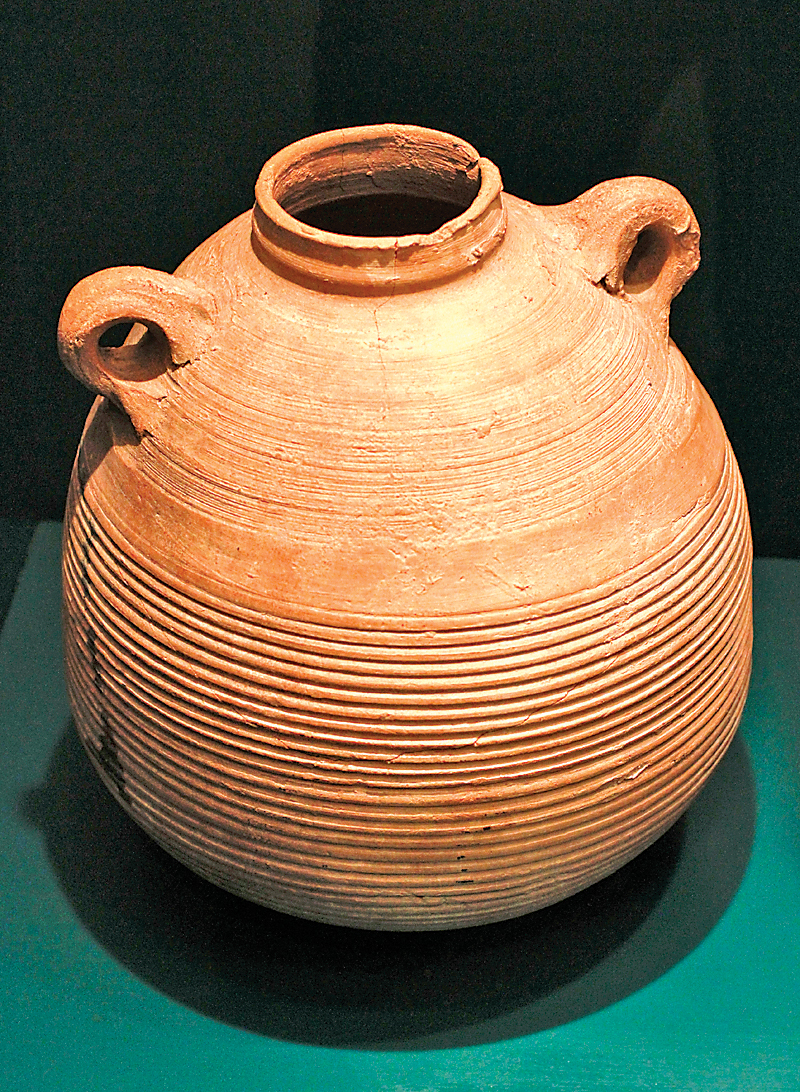Southern Adventist University students stir debate over King David
Friday, January 1, 1904
IF YOU GO
• Exhibit: "The Battle Over King David: Excavating the Fortress of Elah," artifacts from the National Treasures of Israel, through April 2014• Where: Lynn H. Wood Archaeological Museum at Southern Adventist University, Collegedale• Hours: 9 a.m.-noon & 1-5 p.m. Monday-Thursday; 9 a.m.-noon Friday; 2-5 p.m. Sat.-Sun.• Information: 423-236-2030 or www.southern.edu/archaeology• Lecture: "Sanctuary and Cult at Khirbet Qeiyafa" by Hebrew University of Jerusalem professor Yosef Garfinke• When: Feb. 12. 6:30 p.m. open house; 7:30 p.m. lecture• Where: Lynn H. Wood Archaeological Museum, Southern Adventist University, Collegedale• How much: Free
Work in Israel by students at Southern Adventist University has helped move the needle in the debate over whether King David was the significant ruler described in the Bible or a minor figure in Near Eastern history.
For three summers from 2009 to 2011, students with the Collegedale school's Institute of Archaeology were part of an excavation team in partnership with the Hebrew University and the Israel Antiquities Authority. The group was working at the Fortress of Elah, an ancient city from the time of the biblical king.
What was uncovered, according to Southern Adventist University Institute of Archaeology Director Dr. Michael Hasel, dates the site to the time of "one of the most famous" stories in the Bible, the battle between young David and the Philistine Goliath.
"I'm not saying we have found evidence of that battle," he says, but the pottery, the radiocarbon dating of items and things as random as olive pits have established the site's presence in the Davidic time period of 1052-974 B.C. Whether it was built during the reign of Saul, David's predecessor and the first king of the united Israel, or during David's reign is not clear.
In recent years, says Hasel, some scholars questioned David's significance because of a lack of fortifications, literacy and overall kingdom because of a lack of evidence. An insignificant David, he says, "strikes at the heart of Judaism and Christianity."
The body of findings from the nearly six-acre dig, known in Arabic as Khirbet Qeiyafa, "changes a lot," he says.
"It's not the smoking gun, but it has revolutionized the debate."
Evidence
The double casement wall around the fortress, made from 200,000 tons of stone and used to enclose 500 to 600 soldiers and their families, is one tip-off to its significance, according to Hasel. That type of wall "requires design and architectural organization," he says, and the fact that such stonework was in use during the time of David "leads me to believe it was built during reign of Saul."
The wall also had two gates, one facing the land held by the Philistines and one facing the road to Jerusalem, he says. Other than Jerusalem, no other Judean fortress city has been found to have two gates, he says.
Storage jars found in abundance at the archaeological site also point to the Saul/David era. Many have finger impressions on the handle, some of them personal stamps with the words "for the king."
Likewise, seals for official documents, used as amulets and good-luck charms, date to the period.
"They're our smallest artifacts but ones were most excited about," Hasel says.
Martin G. Klingbeil, professor of biblical studies and archaeology at Southern Adventist, says seals are like passports.
"They identify you," he says. "They give you authority. Finding a seal is also very exciting."
For the Fortress of Elah dig, Klingbeil says, the seals have helped corroborate the time period because they "can tell you a lot about the date and the religion of the time period."
An ostracon, or a broken piece of a storage jar with writing, may have been the dig's top archaeological find. The piece -- a reproduction is in the Lynn Wood Museum temporary exhibit at Southern Adventist -- has five lines of Hebrew writing. The original, found by a Hebrew University volunteer, has been examined by the top imaging labs in the United States, according to Hasel. Two language reconstructionists, he says, offered translations, and both mentioned a king, again dating the item to the Saul/David period.
"It's significant," he said, because experts had "seen no evidence of writing" in Hebrew prior to this.
The ruins of the Fortress of Elah were first uncovered in 2007. The Collegedale school became involved a couple of years later.
Although Southern Adventist students were not involved in on-site digs in 2012 and won't be this summer while their final report is published in three volumes (the second due this fall), they'll return to Israel for a dig in 2014. Each trip includes 50 to 60 archaeology students, general-education students and staff and runs six weeks in the summer.
"We've been very privileged to be included in it," says Justo Morales, museum coordinator. "It makes an [exciting] experience for them."
Contact Clint Cooper at ccooper@timesfreepress.com or 423-757-6497. Subscribe to my posts online at Facebook.com/ClintCooperCTFP.


